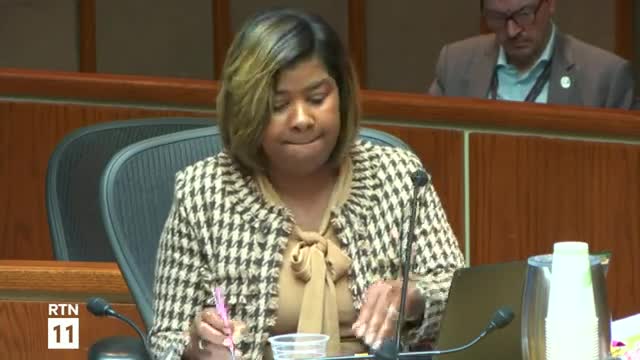Council adopts 12-month annexation boundary to pause creation of new eligible parcels while city studies cost of growth
October 22, 2025 | Raleigh, Wake County, North Carolina
This article was created by AI summarizing key points discussed. AI makes mistakes, so for full details and context, please refer to the video of the full meeting. Please report any errors so we can fix them. Report an error »

City Council adopted a 12-month, time-limited annexation-resolution that defines a boundary within which staff will accept annexation petitions; the resolution prevents new annexation-driven creation of eligible parcels outside that boundary for 12 months while city staff complete a cost-of-growth analysis.
Matthew Klim of Planning and Development presented the staff recommendation and context, noting the city currently has roughly 23,000 acres eligible for annexation under existing policies. Klim summarized: the resolution "defines a 12 month time limited boundary where annexation petitions will be accepted," and makes clear that properties will not automatically gain eligibility simply by proximity to recent annexations during the twelve-month period. (Matthew Klim, Planning and Development.)
What the resolution does
- Establishes a defined boundary (staff map) for a 12-month period; properties inside the boundary remain eligible only under existing rules and petitions must still meet current eligibility criteria.
- Prevents the creation of new eligibility outside the boundary for a 12-month period if council annexes a property that would otherwise create new adjacent eligibility.
- Directs staff to complete a cost-of-growth analysis, including a capital-needs assessment and fees study, to inform future annexation decisions and comprehensive-plan guidance.
Council questions and vote
Councilors asked whether petitions would again become eligible after the 12 months; staff answered yes—contiguous properties would regain consideration under existing rules once the temporary period expires. Council unanimously adopted the resolution.
Why it matters
Passage slows the incremental expansion of city eligibility in the short term and gives council time to review marginal cost-and-revenue data before considering new annexations that would expand service obligations at the city’s edge. Staff said the process will feed into the city’s comprehensive-plan update (Reflecting Raleigh) and future fee and capital-planning work.
This account is based on staff presentation and the council discussion recorded at the Oct. 21 council meeting.
Matthew Klim of Planning and Development presented the staff recommendation and context, noting the city currently has roughly 23,000 acres eligible for annexation under existing policies. Klim summarized: the resolution "defines a 12 month time limited boundary where annexation petitions will be accepted," and makes clear that properties will not automatically gain eligibility simply by proximity to recent annexations during the twelve-month period. (Matthew Klim, Planning and Development.)
What the resolution does
- Establishes a defined boundary (staff map) for a 12-month period; properties inside the boundary remain eligible only under existing rules and petitions must still meet current eligibility criteria.
- Prevents the creation of new eligibility outside the boundary for a 12-month period if council annexes a property that would otherwise create new adjacent eligibility.
- Directs staff to complete a cost-of-growth analysis, including a capital-needs assessment and fees study, to inform future annexation decisions and comprehensive-plan guidance.
Council questions and vote
Councilors asked whether petitions would again become eligible after the 12 months; staff answered yes—contiguous properties would regain consideration under existing rules once the temporary period expires. Council unanimously adopted the resolution.
Why it matters
Passage slows the incremental expansion of city eligibility in the short term and gives council time to review marginal cost-and-revenue data before considering new annexations that would expand service obligations at the city’s edge. Staff said the process will feed into the city’s comprehensive-plan update (Reflecting Raleigh) and future fee and capital-planning work.
This account is based on staff presentation and the council discussion recorded at the Oct. 21 council meeting.
View full meeting
This article is based on a recent meeting—watch the full video and explore the complete transcript for deeper insights into the discussion.
View full meeting
